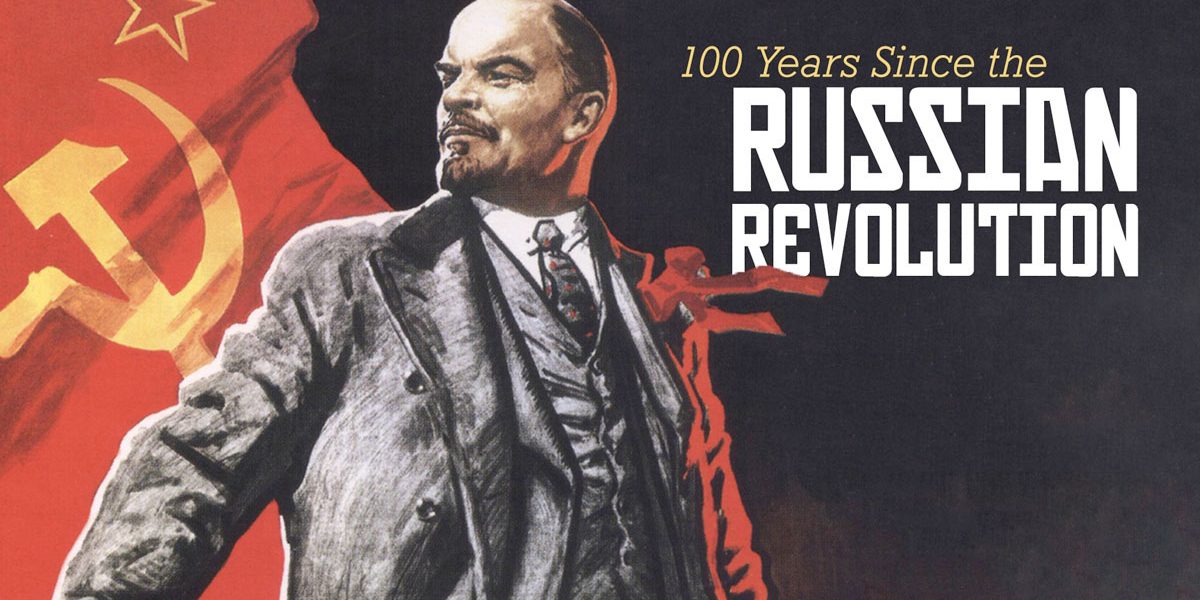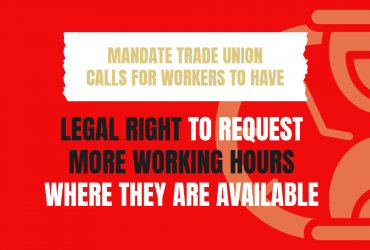
Industrial and political struggle in the Russian Revolution
Monday 8 January 2018Lessons for today from Red October
By Sean Byers, Trademark – Anti-sectarian Unit ICTU
FOR the British Marxist historian Eric Hobsbawm, writing in the early 1990s, the Russian Revolution was the key event of the 20th century, its impact “far more global and profound” than that of the French Revolution a century earlier.
But as Sheila Fitzpatrick has noted recently, the so-called ‘end of history’ has meant that there is little enthusiasm to commemorate the events of 1917. A whole generation has grown up without any experience of the world shaped by the Russian Revolution, while even for sections of the Left it is seen as irrelevant or, worse, something which ushered in decades of bloody conflict and repression.
Nowhere does this apply more than Ireland, where efforts to mark the centenary of the Russian Revolution are few and far between. In lieu of an official programme of events, it has been left to a small number of individual unions and trades councils to organise their own lectures, seminars and discussions on the subject.
Grassroots level
This compares unfavourably with trade union support for the 1916 centenaries programme last year, at both an institutional and grassroots level. It is unclear whether this is an accurate gauge of political consciousness in the trade union movement, but it does appear to betray a lack of interest or awareness of 1917 and its relevance to the task of organised labour up to the present day.
At the very least trade unionists should be able to recognise the importance of understanding the Russian Revolution so that it cannot be used against those of us arguing for an alternative.
Or, as China Miéville puts it in his masterful account of 1917, the world’s first socialist revolution deserves to be celebrated because “things changed once, and they might do so again”. History records only a few occasions when masses of ordinary people overturned an oppressive state order and took power. The ability to point to such occasions, and to draw on the hope and ideas generated by them, is indispensible to confronting the challenges of the present.
The preamble or prehistory to the Russian Revolution can be traced back to the late 19th century, when the vast empire began to undergo radical changes that outstripped Tsarism’s capacity or inclination to adapt accordingly. It was in this period that the Russian working class grew in numbers and confidence.
Despite or perhaps because of the weakness and illegality of the organised labour movement, Russia experienced four waves of mass strikes in the lead up to the war – the first in the late 1870s, the second in 1896-97, the third in 1903-06, and a fourth beginning in 1912. Workers gradually learned from experience that economics and politics in Russia were inseparable: when they struck for improved wages and working conditions, they faced the repressive arms of the Tsarist state.
This coincided with liberal pressures towards constitutional monarchy, which elicited a combination of reform and repression on the part of the regime. These struggles generated rising workplace militancy and increased political radicalism, confounding orthodox Marxist views of Russia’s backwardness.
The long road to the October Revolution was paved with successive political crises that prompted the Bolsheviks in particular to reconsider their theoretical preconceptions and tactics for realising their objectives.
The 1905 Revolution began with the sacking of four workers before escalating into a movement of mass strikes, peasant insurrections and military mutinies, climaxing in the autumn with the newly established St. Petersburg Soviet – a workers’ council elected from the city’s factories – staking control of the capital.
Panicked and wounded, the regime was able to bolster its chances of survival by ending the war with Japan and pledging the creation of a national parliament, the Duma. However, the nascent worker-peasant alliance continued to pose a threat into 1906, land seizures and soviets being the order of the day.
The outbreak of the war introduced a number of new dynamics that accentuated the old regime’s contradictions and weaknesses. In the first place, with the Russo-Japanese War still raw in people’s memories, each major defeat suffered by Russia during the First World War – and there were many – would cause society to turn against the hapless Nicholas II and his government, highlighting their illegitimacy.
Secondly, the economic hardship caused by the war – high inflation coupled with low wages, and food shortages leading to mass starvation – heightened the sense of discontent felt by Russia’s vast population. In these harsh conditions the rapidly expanding industrial workforce grew more militant and strikes more frequent.
And while the economic struggles continued, the political strike movement gained new momentum. Stories broke through of mutinies, of small groups of soldiers refusing orders to fire upon demonstrations; increasing numbers joined the ranks of the revolution. This new development underscored one unintended but ultimately fatal consequence of the war effort: the coming together of Russia’s disparate and diverse working class on the battlefield as well as on the home front.
Radical message
The Bolsheviks’ radical message became more popular with workers as the mood became more militant. But not even they expected revolution to break out when it did. No strikes had been called for International Women’s Day, 23 February 1917.
The influential Bolshevik Vyborg Committee based in the heart of Petrograd saw no appetite for strike action. So when 7,000 low paid women workers from the city’s textile mills spilled onto the streets demanding ‘Bread!’, it was a surprise to everyone but the women themselves. Because, as Neil Faulkner rightly notes:
“The working women of Petrograd were doubly oppressed: ground down in the workplace, by wretched conditions, long hours and low pay; ground down at home by the toil and poverty of everyday existence. Many were on their own, their brothers, husbands and sons conscripted. Many were grey with hunger and exhaustion. Sometimes they would go two or three days without eating. Sometimes they would cross themselves and weep with joy when they managed to buy bread. When a loaf can induce tears, revolution is close.”
By the close of International Women’s Day, the striking women had called out tens of thousands of workers from neighbouring engineering factories. Within three days virtually all of Petrograd’s major factories had been shut down. More than 300,000 people were now active in a political strike, the slogan ‘Bread’ crowded out by banners reading ‘Down with the autocracy!’, ‘Down with the war!’ Army regiments mutinied in larger numbers than before, with thousands of soldiers coming over to the revolution. Before long it had spread to Moscow and the provincial cities, leaving the Tsarist regime crippled beyond repair.
The February Revolution brought about the collapse of the Romanov dynasty that had ruled Russia for centuries, giving way to a ‘dual power’ situation in which the soviet – now comprised of worker and soldier delegates – gradually became the ultimate source of sovereign authority.
On the surface, this power manifested itself in the Provisional Government’s adoption of key parts of the soviet programme and the loyalty of the armed forces to the soviet. At the same time, new trade unions were formed, with Mensheviks and Bolsheviks taking up leadership positions; and at a grassroots level, workers’ committees drew down economic power by assuming control of their factories.
The struggle between the Provisional Government and the soviet found expression in a series of political crises that occurred between February and October. Membership of the Bolshevik Party increased from just 24,000 to over 350,000 in the same period, as the population grew war weary and economic conditions deteriorated.
Strikes and workplace occupations played an important role during the July Days demonstrations – for instance, when most of the 500,000 demonstrators who came out did so under the Bolshevik banner of ‘All power to the soviets!’
General Kornilov’s attempted coup of August likewise failed in large part because of the actions of ordinary workers: railwaymen diverted trains bringing troops into Petrograd, printers halted the distribution of Kornilov’s plans, and soviet activists used their newfound influence on the soldiers to prevent wider bloodshed.
With hindsight, the Bolsheviks gaining control of the Petrograd Soviet at the end of August and the Moscow Soviet a week later would seem to imply an inexorability about the Russian Revolution. The events of 25-26 October, both on the streets and behind the scenes at the Second All-Russian Soviet Congress, were much more chaotic and uncertain than this.
Of Lenin, Miéville has written that, “Reality, radical, now stunned him.” However, the strength of the Bolsheviks’ position was that they had spent a year immersing themselves in the working-class movement, reformulating their tactics to confer with changing conditions. When the Revolution came, they were able to hasten the transfer of power to the soviet and guide it towards implementation of a socialist programme.
Full circle
One hundred years on and we have in many ways come full circle. New faultlines are emerging and becoming increasingly threatening in the existing economic and political order. But with this comes possibilities that haven’t existed in years. While the Russian Revolution cannot be taken as a blueprint as the only way of building a new society, it does offer a number of positive lessons for trade union and community activists.
Firstly, when we look at the history of how successful revolutions are made, we find that it means not merely lecturing at people but listening to them, learning from them and harnessing their experiential knowledge. It also means being involved in ongoing struggles, campaigns and forms of resistance which are objectively anti-capitalist even if they are not meant as such. Struggles for universal healthcare, the right to a home, a high quality system of free public education, for a sustainable environment, or against racist and gendered forms of oppression and the logic of privatisation and commodification – each of these represents an attack on the system as a whole.
In addition, as the Right2Water campaign aptly demonstrates, participation in these forms of resistance can help trade unions to reconnect with communities and reverse the sharp decline they have experienced in the past three decades.
Secondly, while the system and human reality have changed in the past 100 years, the forms of oppression and exploitation they sought to overturn are fundamentally the same. The task of building economic and political power in workplaces and communities remains vitally important, particularly as the institutions of representative democracy are being hollowed out.
Already we are seeing workers in Ireland starting to push back against the onslaught that began in 2008, with the number and intensity of industrial disputes growing year on year since 2012. But as the Russian Revolution and indeed the missed opportunities of the Irish revolutionary period show, industrial struggle must be complemented with direct political interventions and a political strategy for fulfilling our programme.
Finally, the Russian Revolution shows that we must come armed with a positive vision for a better future and win the battle of ideas, over the course of a generation if necessary. In this regard, the British Labour Party manifesto and the role of Momentum in popularising Corbyn’s simple message underscore the potential that exists for a grassroots-led movement like Right2Change.





